
Woollahra is a suburb in the Eastern Suburbs of Sydney, in the state of New South Wales, Australia. Woollahra is located 5 km (3.1 mi) east of the Sydney central business district, in the local government area of the Municipality of Woollahra. Woollahra is located on the traditional land of the Birrabirragal and Gadigal people of the Eora Nation. The Municipality of Woollahra takes its name from the suburb but its administrative centre is located in Double Bay. Woollahra is famous for its quiet, tree-lined residential streets and village-style shopping centre.
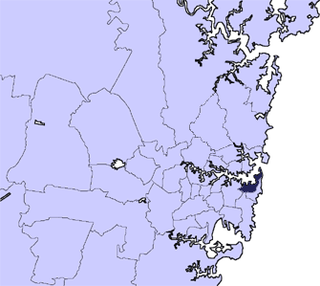
Woollahra Municipal Council is a local government area in the eastern suburbs of Sydney, in the state of New South Wales, Australia. Woollahra is bounded by Sydney Harbour in the north, Waverley Council in the east, Randwick City in the south and the City of Sydney in the west.

Thompson Square Conservation Area is a heritage-listed precinct centred around Thompson Square in Windsor, City of Hawkesbury, New South Wales, Australia. It was added to the New South Wales State Heritage Register on 2 April 1999.

Jobbins Terrace is a series of heritage-listed terrace houses now repurposed as residences and offices located at 103–111 Gloucester Street, in the inner city Sydney suburb of The Rocks in the City of Sydney local government area of New South Wales, Australia. It was built from 1855 to 1857. It is also known as Longs Lane Terraces/Precinct . The property is owned by Property NSW, an agency of the Government of New South Wales. It was added to the New South Wales State Heritage Register on 10 May 2002.

The Long's Lane Precinct, also Longs Lane Precinct, comprise a series of heritage-listed terrace houses located at 130 Cumberland Street, 132–134 Cumberland Street, 136-138 Cumberland Street, and 140–142 Cumberland Street, in the inner-city Sydney suburb of The Rocks in the City of Sydney local government area of New South Wales, Australia. The terrace houses were built from 1888 to 1914, and they are also known as 130 Cumberland Street,132–134 Cumberland Street, 136–138 Cumberland Street, Watson's Butchery, and 140–142 Cumberland Street. The properties are owned by NashCap, an Australian-based real estate private equity firm. The precinct and the terrace houses were added to the New South Wales State Heritage Register on 10 May 2002.
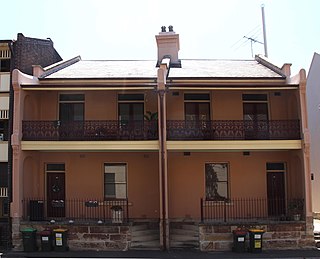
113–115 Gloucester Street, The Rocks is a heritage-listed terrace house located in the Long's Lane Precinct at 113–115 Gloucester Street, in the inner city Sydney suburb of The Rocks in the City of Sydney local government area of New South Wales, Australia. It was built during 1881. It is also known as Longs Lane Terraces/Precinct. The property is owned by Property NSW, an agency of the Government of New South Wales. It was added to the New South Wales State Heritage Register on 10 May 2002.

Baker's Terrace are heritage-listed commercial office buildings and former terrace houses located at 66–68 and 70–72 Gloucester Street, in the inner city Sydney suburb of The Rocks in the City of Sydney local government area of New South Wales, Australia. It was built during 1875 for William Andrews and Edward Baker. It is also known as Bakers Terrace. The property is owned by Property NSW, an agency of the Government of New South Wales. It was added to the New South Wales State Heritage Register on 10 May 2002.
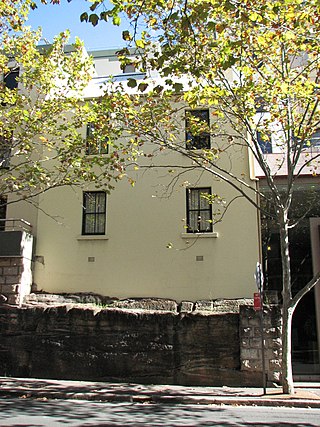
71 Harrington Street, The Rocks are heritage-listed serviced apartments and former terrace houses and shops located at 71 Harrington Street, in the inner city Sydney suburb of The Rocks in the City of Sydney local government area of New South Wales, Australia. It was built from 1860. It is also known as Sailors Return Hotel; Stafford Apts. and 75 Harrington Street; Clocktower Development. The property is owned by Property NSW, an agency of the Government of New South Wales. It was added to the New South Wales State Heritage Register on 10 May 2002.
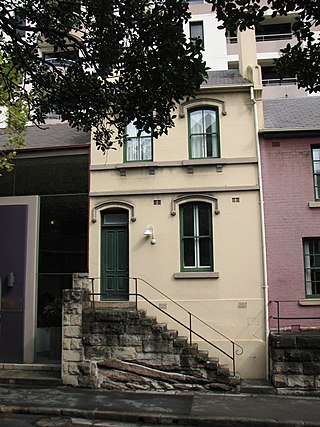
67 Harrington Street, The Rocks is a heritage-listed serviced apartments complex and former terrace house located at 67 Harrington Street, in the inner city Sydney suburb of The Rocks in the City of Sydney local government area of New South Wales, Australia. It was built from 1885. It is also known as Stafford Apartments and 75 Harrington Street; Clocktower Development. The property is owned by Property NSW, an agency of the Government of New South Wales. It was added to the New South Wales State Heritage Register on 10 May 2002.

61–65 Harrington Street, The Rocks is a heritage-listed serviced apartments and former terrace house located at 61–65 Harrington Street, in the inner city Sydney suburb of The Rocks in the City of Sydney local government area of New South Wales, Australia. It was built from 1870. It is also known as Stafford Apartments and 75 Harrington Street; Clocktower Development. The property is owned by Property NSW, an agency of the Government of New South Wales. It was added to the New South Wales State Heritage Register on 10 May 2002.
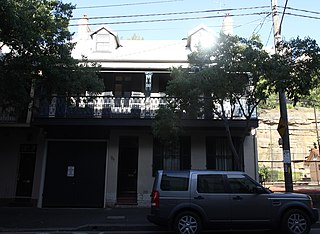
Toxteth is a heritage-listed residence located at 94 Kent Street, in the inner city Sydney suburb of Millers Point, New South Wales, Australia. It was added to the New South Wales State Heritage Register on 2 April 1999.

14–22 Trinity Avenue, Millers Point is a heritage-listed residence located at 14–22 Trinity Avenue, in the inner city Sydney suburb of Millers Point in the City of Sydney local government area of New South Wales, Australia. The property was added to the New South Wales State Heritage Register on 2 April 1999.

Stevens Terrace is a heritage-listed former boarding house and now residence located at 73 Windmill Street, in the inner city Sydney suburb of Millers Point in the City of Sydney local government area of New South Wales, Australia. The property was added to the New South Wales State Heritage Register on 2 April 1999.

Winsbury Terrace are heritage-listed terrace houses located at 75–79 Kent Street, in the inner city Sydney suburb of Millers Point in the City of Sydney local government area of New South Wales, Australia. It was built from 1875. The property was added to the New South Wales State Heritage Register on 2 April 1999.

Undercliffe Terrace is a heritage-listed row of terrace houses located at 52–60 Argyle Place, in the inner city Sydney suburb of Millers Point in the City of Sydney local government area of New South Wales, Australia. The property is also known as Grimes' Buildings. was added to the New South Wales State Heritage Register on 2 April 1999.

46–48 Argyle Place, Millers Point is a heritage-listed terrace house and now boarding house located at 46–48 Argyle Place, in the inner city Sydney suburb of Millers Point in the City of Sydney local government area of New South Wales, Australia. It was built during 1850. The property was added to the New South Wales State Heritage Register on 2 April 1999.

49–51 Kent Street, Millers Point is a heritage-listed residence located at 49–51 Kent Street, in the inner city Sydney suburb of Millers Point in the City of Sydney local government area of New South Wales, Australia. It was built from 1855 to 1862. The property was added to the New South Wales State Heritage Register on 2 April 1999.
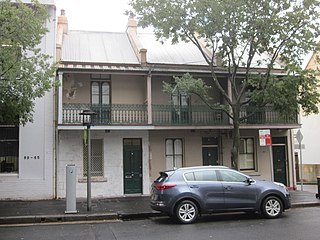
Hexam Terrace is a heritage-listed residence at 59–63 Kent Street, in the inner city Sydney suburb of Millers Point in the City of Sydney local government area of New South Wales, Australia. The property was added to the New South Wales State Heritage Register on 2 April 1999.
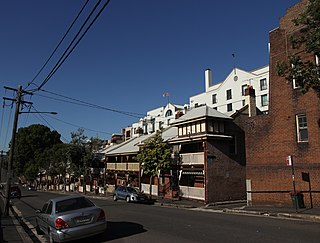
38–72 High Street, Millers Point are heritage-listed terrace houses located at 38–72 High Street, Millers Point, City of Sydney, New South Wales, Australia. The properties are privately owned. It was added to the New South Wales State Heritage Register on 2 April 1999.

22–32 Argyle Place, Millers Point is a heritage-listed row of former terrace houses and now commercial building located at 22–32 Argyle Place, Millers Point, City of Sydney, New South Wales, Australia. It is also known as Cole's Buildings. The property is privately owned and was added to the New South Wales State Heritage Register on 2 April 1999.






















